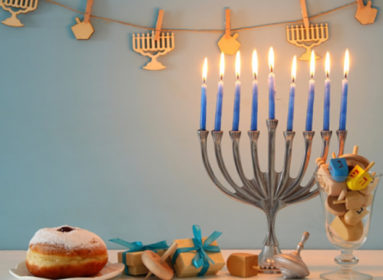By Rafael Medoff
Much of the struggle for Soviet Jewry was waged by picketers, marchers, and lobbyists in the United States. But a lesser-known part of the battle was waged by individual American Jews who journeyed to the USSR itself. Forty years ago, a Manhattan rabbi helped ignite a Simchat Torah celebration in Moscow that was heard ’round the world.
Under the leadership of Rabbi Haskel Lookstein, Congregation Kehilath Jeshurun on Manhattan’s upper east side was one of the first major synagogues in the U.S. to take an active interest in the plight of Soviet Jewry. In 1972, Rabbi Lookstein decided to take it a step further. At the urging of the Rabbinical Council of America (RCA), he and his wife Audrey agreed to enter the belly of the beast—to undertake a mission to the Soviet Union itself. Posing as tourists, their goal was to smuggle in Jewish religious items, meet with refuseniks, facilitate Sukkot and Simchat Torah celebrations, and bring back an eyewitness report on the oppression of Soviet Jewry.
On Sept. 20, two days before Sukkot, the Looksteins landed in Leningrad, their suitcases stuffed with religious books, sets of lulavim and etrogim, and enough canned tuna fish and soup cubes to last them two weeks—their
primary source of kosher food.
After word spread of the Looksteins’ arrival, more than 1,000 worshippers jammed into the Leningrad synagogue. Barred as a tourist from delivering a formal sermon, Rabbi Lookstein devised a roundabout way to bring a message of encouragement. Instead of reading that week’s scheduled haftarah portion, he read the vision of the valley of dry bones from the book of Ezekiel, concluding by announcing in Yiddish: “Like those bones, you thought you were dried up, finished, but God says, ‘I will bring you out of your graves and plant you on your land, I promise and will do it.’”
In the synagogue’s sukkah after services, the rabbi and rebbetzin taught the congregants holiday songs that focused on the ingathering of the exiles. Among those present was 96 year-old Mikhail Abramovich Lokshin. He introduced himself as the brother of Rabbi Lookstein’s grandfather, who had left Russia more than 50 years earlier. The surprise reunion was “an incredibly emotional experience for everyone,” the rabbi recalled.
After meeting with refuseniks in Leningrad and Kiev, the Looksteins, trailed at least part of the time by a KGB agent, proceeded to Moscow for Simchat Torah.
An estimated 1,500 people—twice the normal capacity—filled Moscow’s main synagogue on the first evening of the holiday and spilled out into the surrounding streets. As the final prayers were uttered, Rabbi Lookstein, who led the service, exhorted the crowd to rejoice with the Torah scrolls.
A Washington Post correspondent described the scene: “Inside the temple, the singing and dancing was encouraged by an American rabbi, Rev. Haskel Lookstein of New York City. He repeatedly tried to arouse the congregation to
sing more loudly, remarking that Jews in New York were trying to sing loud enough to be heard in Russia and asking the Moscow Jews to reciprocate in kind.”
They did.
For long hours that evening and again the next morning, enormous crowds of Soviet Jews exuberantly embraced their roots through song and dance. “They were waiting for a [Jewish] experience,” Rabbi Lookstein recalled. Fifty years of forced assimilation by the Soviet authorities had not eradicated their yearning for Judaism.
Shortly after he and his wife returned to the U.S., Rabbi Lookstein submitted a report to the RCA on how future emissaries could operate most effectively within the harsh environment of the USSR. The report remains one of the most remarkable documents of the Soviet Jewry struggle, covering an extraordinary range of concerns:
Keep customs officials from uncovering smuggled messages by engaging them in long conversations about exchanging currency, “so that there is very little time left for the examination of baggage.” Memorize the text of the ketuba in case a wedding ceremony needs to be conducted under unusual circumstances or severe stress. If one wants to use the Moscow synagogue’s mikveh to perform a conversion ceremony, “a few rubles will go a long way” in persuading nervous synagogue staffers. And more.
Most of all, he emphasized that while the Soviet Jewish struggle had to focus primarily on the Jews’ right to emigrate, it also needed to be recognized that their Jewish spiritual needs should not be neglected in the meantime. “They want to deepen their Jewish experience beyond the purely national and social,” he wrote. “They hunger for God and religion; we must help to satisfy their hunger.”
The Simchat Torah celebrations of September 1972 undoubtedly were an important step in that direction.
Dr. Rafael Medoff is director of The David S. Wyman Institute for Holocaust Studies and author or editor of 15 books about Jewish history, including “Rav Chesed: The Life and Times of Rabbi Haskel Lookstein.”








 Southern New England Jewish Ledger
Southern New England Jewish Ledger













